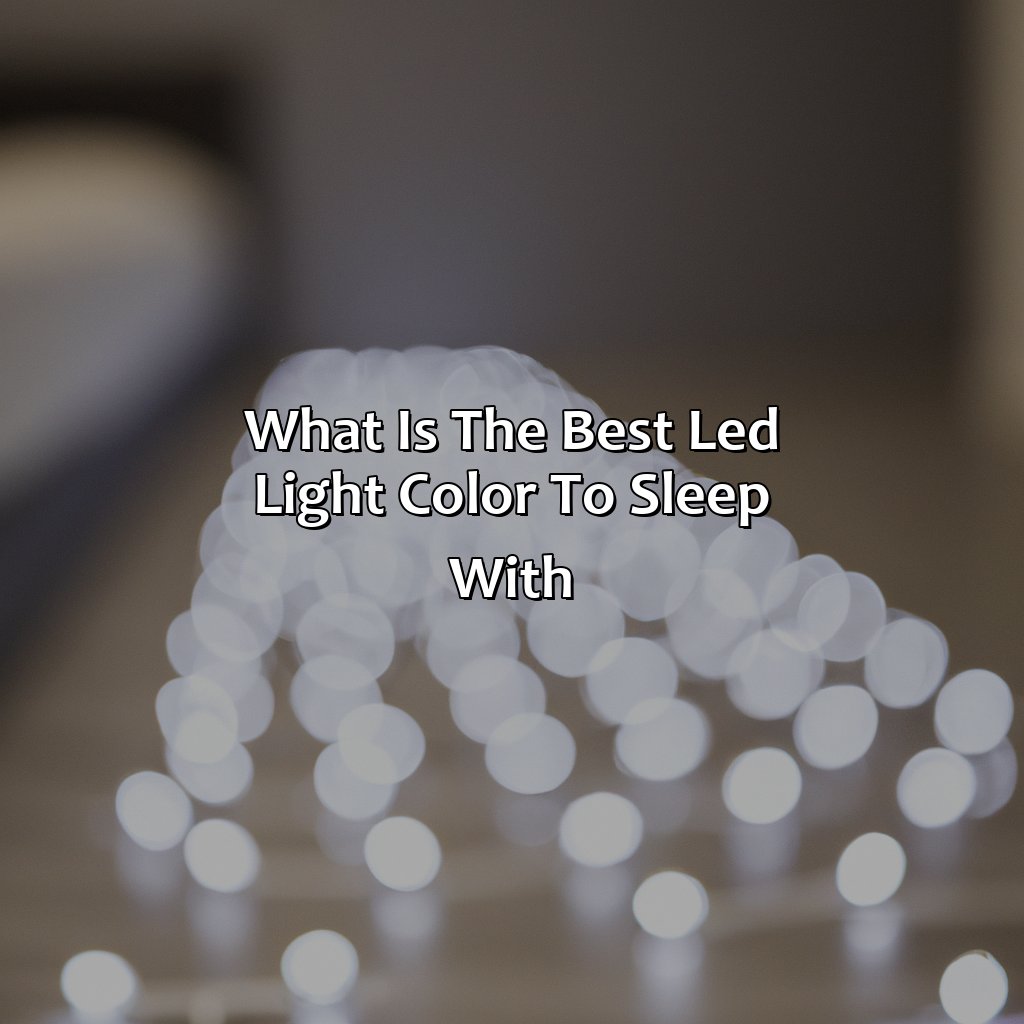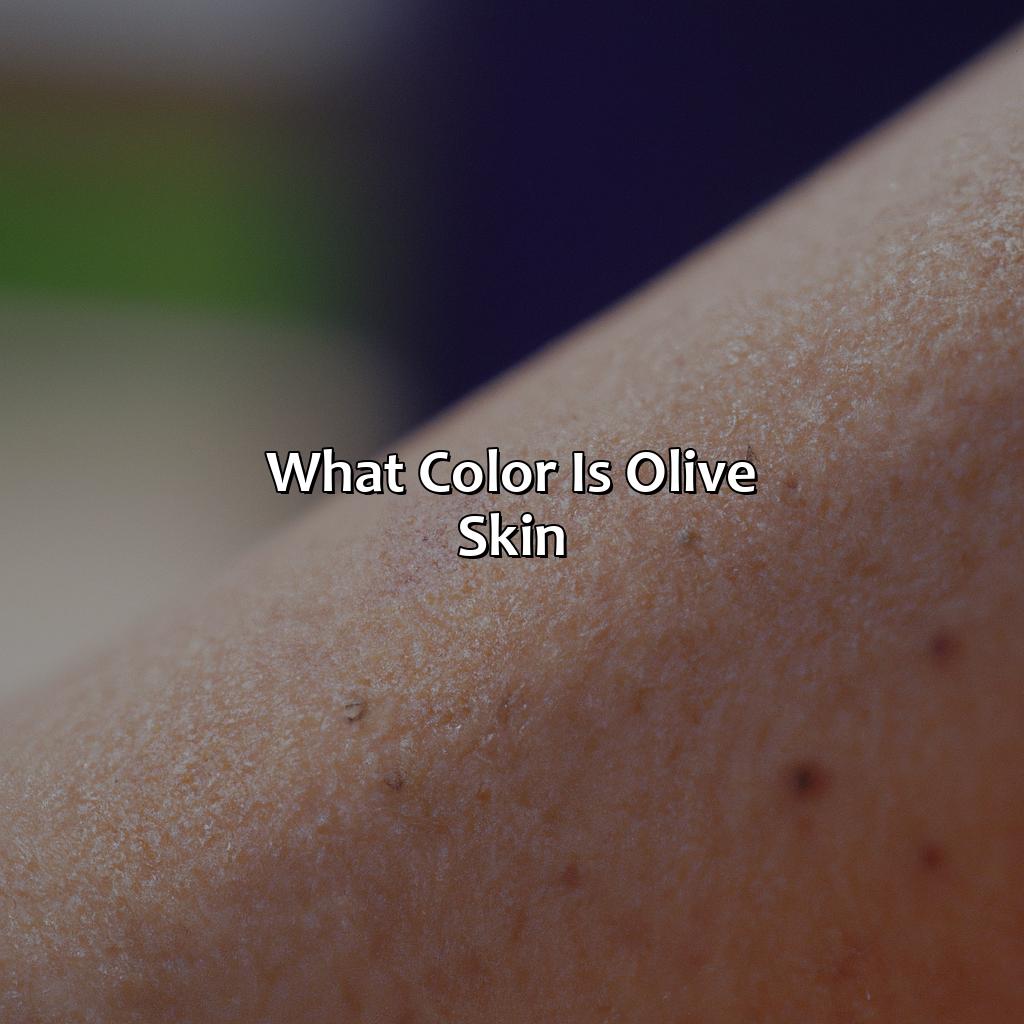Key Takeaway:
- Light and sleep quality are closely related, and the right LED light color can help improve sleep by regulating the circadian rhythm and promoting melatonin production.
- Blue LED light is known to negatively impact sleep quality by disrupting melatonin production, while red LED light therapy is shown to improve sleep quality. Other sleep-friendly LED light colors include warm light, yellow light, and natural light.
- When choosing the best LED light color for sleep, personal preferences, bedroom environment, and time of day should be considered. It is also important to avoid exposure to LED light before bedtime and establish a sleep-friendly bedroom environment.
Understanding the Effect of Light on Sleep Quality
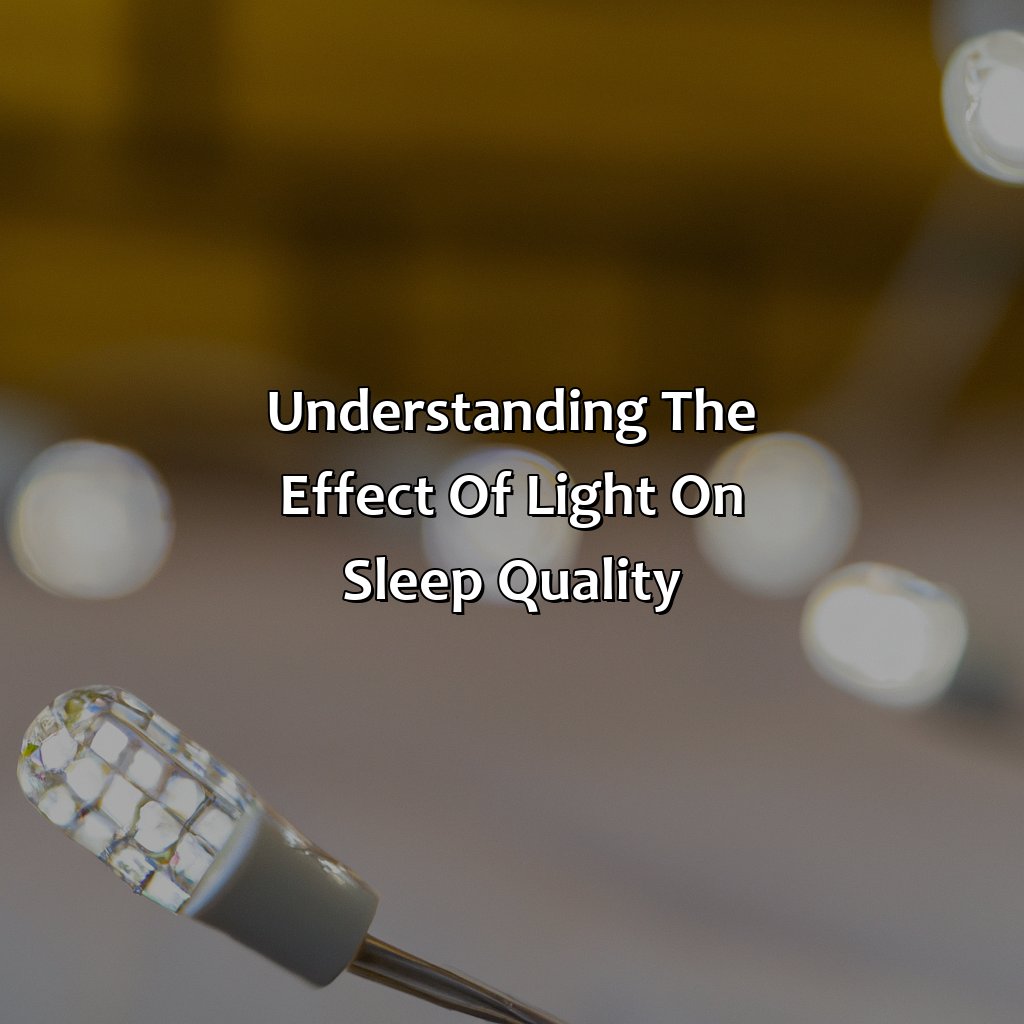
Photo Credits: colorscombo.com by Larry Gonzalez
The impact of light on sleep quality is significant, and it is essential to understand the role that it plays in regulating our circadian rhythm. The amount and type of light exposure determine the body’s internal clock, which controls when we wake up and when we feel sleepy. By regulating the human circadian rhythm, light affects sleeping patterns, mood, alertness, and overall well-being. Matching the right light color temperature to the time of day can improve sleep quality, which is important for maintaining good health.
Numerous studies have shown that exposure to blue light, such as that emitted by electronic devices, can delay the onset of sleep. On the other hand, warm yellow light, like candlelight, facilitates relaxation and helps with restful sleep. It is important to note that excessive exposure to bright light or light at the wrong time of day can impair sleep quality. Therefore, it is advisable to limit exposure to blue light in the evening.
It is also important to note that the right amount and duration of light exposure during the day can have a positive effect on sleep quality. By exposing ourselves to bright light in the morning, we can help to regulate our circadian rhythm, making it easier to fall asleep at night. One way to achieve this is by spending time outdoors in the morning or using a light therapy lamp.
A study conducted in the 1980s found that individuals with insomnia experienced significant improvement in their symptoms when exposed to bright light in the morning. This research helped establish the link between light exposure and sleep quality leading to the development of light therapy as a form of treatment for sleep disorders.
Proper sleep is crucial for good health, and understanding the effect of light on sleep quality is essential. By being conscious of the type and amount of light we are exposed to, we can optimize our circadian rhythm, promote relaxation, and achieve restful, restorative sleep.
Impact of LED Light on Sleep Quality
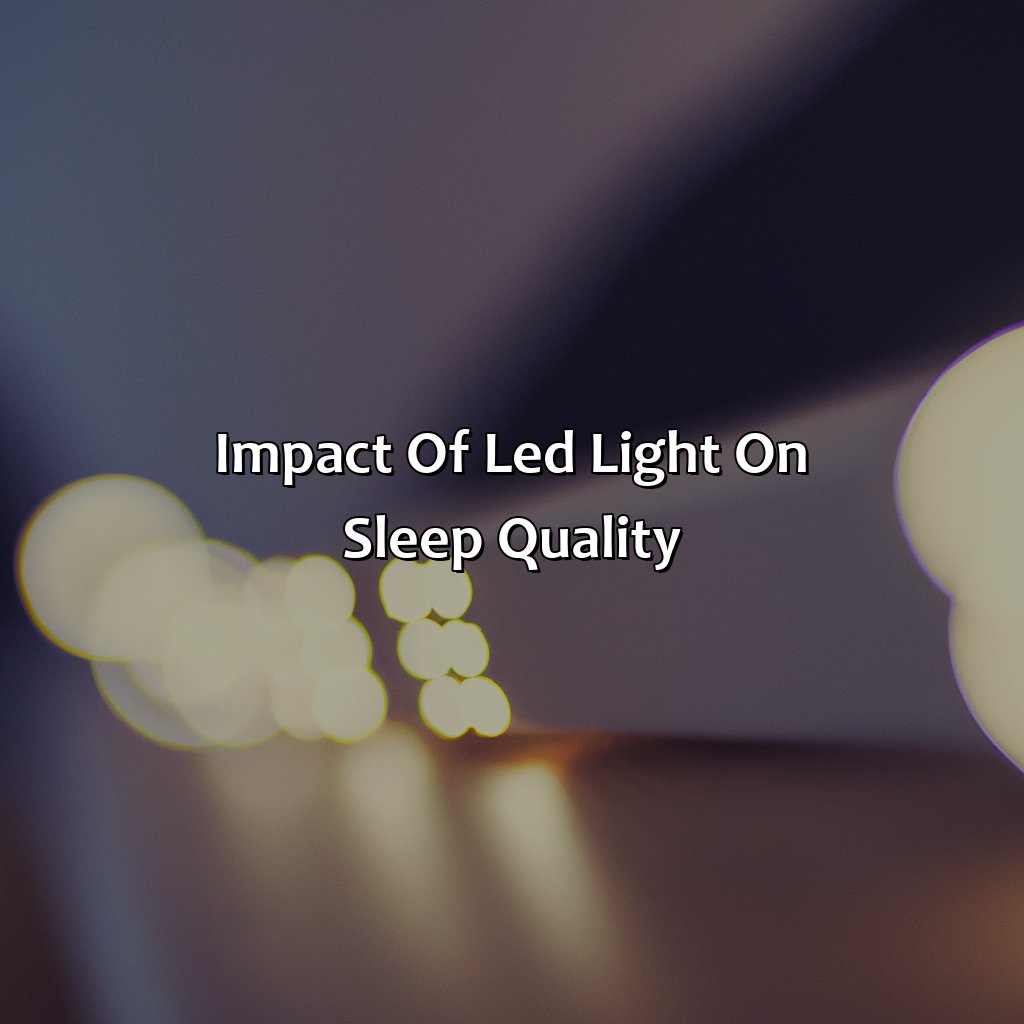
Photo Credits: colorscombo.com by Tyler Young
Dive into the section on LED light and sleep! Relevant keywords include LED light types and their effect on sleep quality. Two important sub-sections:
- Learn about different LED light types, e.g. color temperature and spectrum.
- Evaluate how LED light affects melatonin production. Focus on its impact on hormone production and sleep disruption.
Understanding the Different Types of LED Light
There are several types of LED lights, each with its unique impact on sleep quality. Understanding these variations is essential for choosing the best LED light color for optimal sleep. The table below shows the different types of LED lights along with their color temperature and spectrum.
| Type of LED Light | Color Temperature | Color Spectrum |
|---|---|---|
| Warm White | 2000-3000K | Red/Yellow |
| Neutral White | 3500-4100K | Green/Yellow |
| Cool White | 5000-6500K | Blue/White |
Apart from the primary colors of light, there are other aspects to consider when evaluating the impact of LED light on sleep quality. For instance, blue light has been found to lower melatonin production, leading to disrupted sleep patterns. On the other hand, red light has a calming effect on the body and can help promote a good night’s rest.
When choosing the best LED light color for optimal sleep quality, several factors come into play. Personal preferences, bedroom environment, and time of day are all critical considerations that can affect how well one sleeps. In general, though, warm white or red lights are recommended for bedrooms as they have the least impact on melatonin levels.
If you’re struggling with getting good sleep, there are some tips you can follow to improve your sleeping habits. These include avoiding exposure to bright LED lights before bedtime and creating a relaxing bedroom environment that fosters tranquility and restfulness.
Sleep is vital for maintaining optimum health and well-being. Therefore, it’s crucial to choose the best LED light color that promotes optimal sleep quality while enjoying a comfortable living experience. Don’t let fear of missing out prevent you from enjoying better sleep – choose your LED light with care!
LED light might save you energy, but it could also be stealing your sleep hormone, melatonin, leaving you feeling like a dim bulb in the morning.
Evaluating the Impact of LED Light on Melatonin Production
LED light can potentially disrupt the natural production of melatonin, a hormone that helps regulate sleep cycles, leading to poor sleep quality. Research has shown that blue light, in particular, suppresses melatonin production more than other colors of light. However, newer LED lights use different wavelengths and color temperatures that have varying levels of impact on hormone production.
Studies have found that warmer colored LED lights with lower color temperatures may have less negative effects on melatonin production than cooler and brighter LED lights. This suggests that the best LED light color for optimal sleep quality would be a warm color with a low color temperature.
While blue light is generally associated with negative impacts on sleep quality and hormone production, research is still ongoing to determine the specific impact that other colors may have. It’s important to consider personal preferences as well as factors such as bedroom environment and time of day when choosing the best LED light color for sleep.
Pro Tip: Consider installing dimmer switches for LED lights in your bedroom to adjust the brightness and color temperature based on your needs throughout the day.
Find the sweet spot between calming and sleep-friendly with the best LED light color for optimal sleep quality.
Best LED Light Color for Sleep Quality
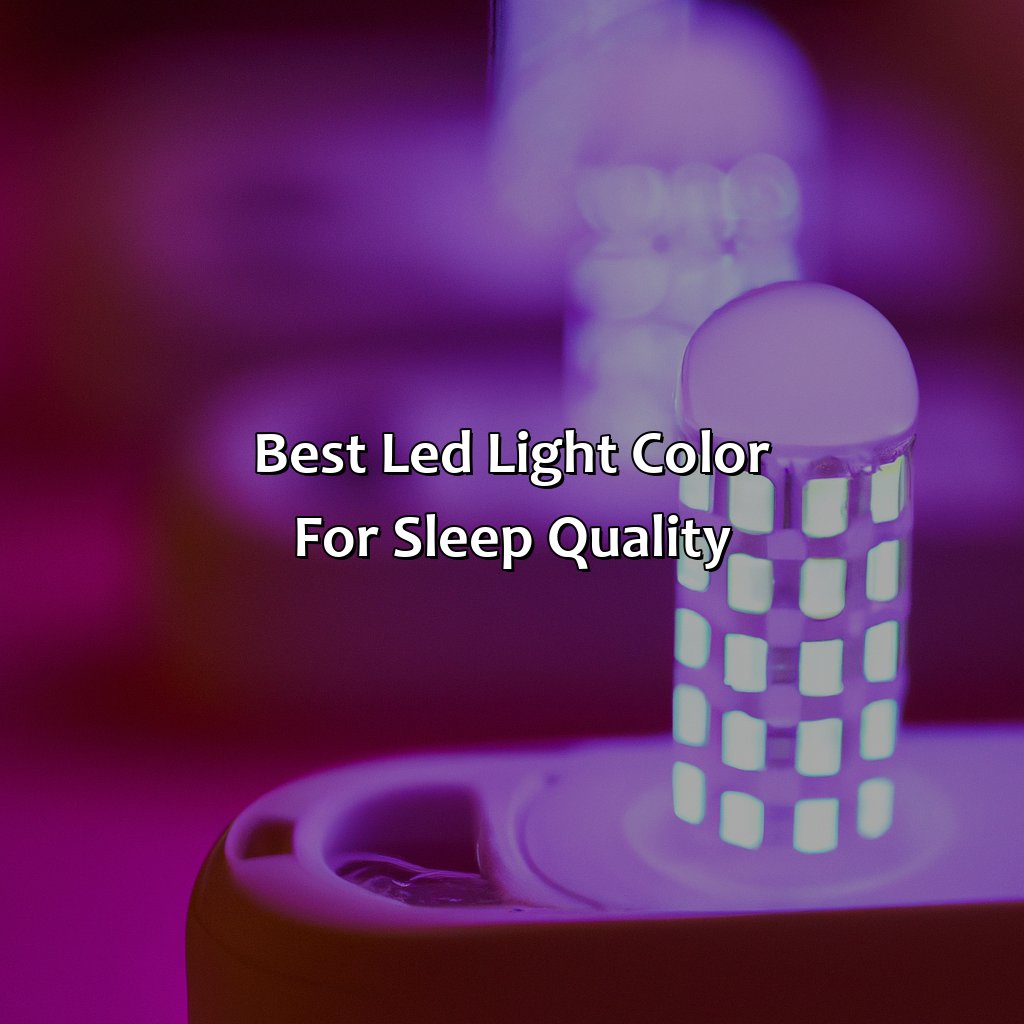
Photo Credits: colorscombo.com by Stephen Hernandez
Wondering what the best LED light color is for improving sleep quality? Let’s discuss it! Two sub-sections to be considered: Blue Light vs. Red Light and Evaluating the Impact of Other Colors on Sleep Quality.
1. Blue Light vs. Red Light: Blue Light has been proven to suppress melatonin production, which can lead to difficulty falling asleep and poor quality of sleep. On the other hand, Red Light has been found to have many benefits, including promoting relaxation and better sleep quality. Additionally, Red Light therapy has been shown to alleviate symptoms of insomnia and other sleep disorders.
2. Evaluating the Impact of Other Colors on Sleep Quality: Different colors of light can have different effects on sleep quality. Warm light, such as red, orange, or amber, tends to promote relaxation and can be beneficial for improving sleep quality. Cool light, such as blue or green, can be stimulating and may disrupt sleep patterns. Natural light and yellow light are both good options for promoting relaxation and improving sleep quality. Green light has been found to improve both sleep quality and mood. Purple, pink, and other colors are less studied but may have similar effects to blue or red light.
Blue Light vs. Red Light
Blue Light vs. Red Light: Studies have shown that blue light exposure can suppress melatonin production, making it harder to sleep. In contrast, red light therapy has been shown to improve sleep quality and reduce the amount of time it takes to fall asleep.
| Factors | Blue Light | Red Light |
| Melatonin suppression | Increases melatonin suppression | Does not suppress melatonin secretion |
| Circadian rhythm disruption | Disrupts circadian rhythm and delays sleep onset | May help regulate circadian rhythm and improve sleep quality |
In addition to blue and red light, other colors in the light spectrum can also affect sleep quality. For example, green light has been found to have a similar effect on melatonin production as blue light, while yellow and amber lights are less disruptive.
Interestingly, red light therapy was first used by NASA for plant growth experiments before being discovered to have potential benefits for human health.
When considering the impact of different colored LED lights on sleep quality, it is important to take personal preferences, bedroom environment, and time of day into consideration. Additionally, investing in blue light filtering glasses or using apps that adjust screen color temperature can help minimize the negative effects of blue light exposure before bedtime.
Overall, choosing the right LED light color can play an important role in promoting optimal sleep quality. Red or warm-colored lights may be a better option than blue or cool-toned lighting for those who struggle with getting restful sleep. From calming warm hues to energizing cool tones, the impact of different light colors on sleep quality is as diverse as a box of crayons.
Evaluating the Impact of Other Colors on Sleep Quality
The impact of different colors on sleep quality is a crucial element to consider when choosing the best LED light for optimal sleep. Warm light is ideal as it mimics natural light and has a soothing effect, giving the body cues to wind down. Cool light can be stimulating and may interfere with melatonin production, leading to disrupted sleep. Yellow and green lights have similar effects to warm light, promoting relaxation and healthy melatonin levels. Additionally, purple, pink, orange, and amber lights can also aid in sleep by reducing blue light exposure.
To further evaluate the impact of colors on sleep quality, we must understand the concept of color temperature and how certain hues affect our physiology. Colors with higher temperatures appear bluer whereas those with lower temperatures appear warmer or more yellow-toned. Therefore, the key takeaway is that warm-toned lights are better for inducing relaxation while cool-toned lights may have adverse effects.
When selecting an LED light color for optimal sleep quality, personal preferences play an important role. For example, some individuals may prefer a brighter setting with either low or high Kelvin ratings; others may prefer dim lighting for bedtime reading or meditation practices.
Creating a sleep-friendly environment can improve both the quantity and quality of our sleep patterns. Incorporating warm light settings in combination with reducing blue light exposure before bedtime are simple yet effective ways to enhance restful slumber. These small changes can significantly boost overall well-being and vitality levels during waking hours.
Choosing the right LED light color for your bedroom can make all the difference in your sleep hygiene.
Factors to Consider When Choosing the Best LED Light Color for Sleep
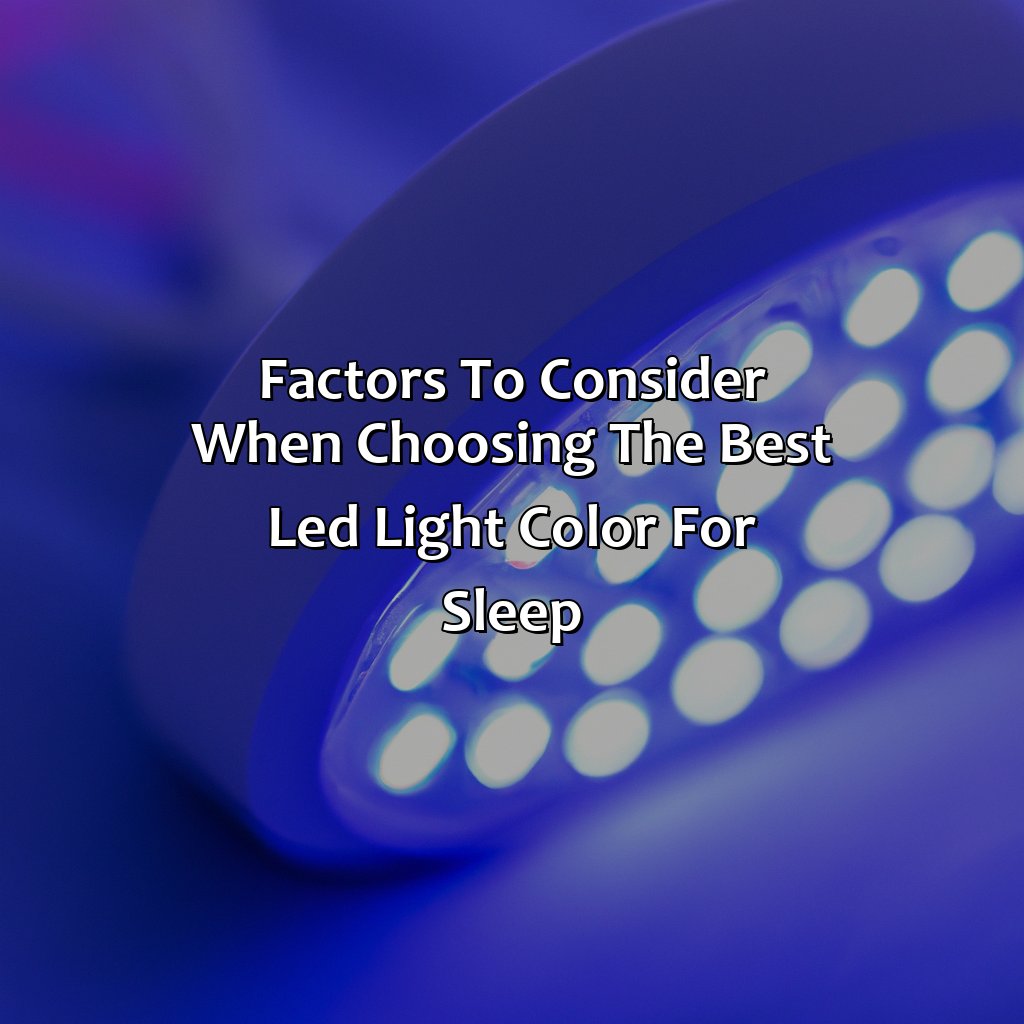
Photo Credits: colorscombo.com by Bradley Campbell
LED light colors for sleep hygiene must be chosen with care. Personal preferences and bedroom environment are key factors. Time of day also matters for the best outcome. Understanding these is essential for a good night’s rest. Choose the right LED light color for your bedroom!
Personal Preferences
Individual sleep preferences are unique and vary from person to person. The effect that LED light color has on sleep is one area where personal preferences can play a significant role. When selecting the right LED light color for optimal sleep quality, take into account bedroom decor, time of day, and other factors that may impact sleep quality.
Personal preference is important when it comes to selecting the best LED light color for sleep. Your choice of LED light color may affect your circadian rhythm, which influences your body’s natural sleep-wake cycle. For some individuals, certain LED light colors may be more beneficial for achieving better sleep quality than others.
When choosing an LED light color for personal preferences and sleep, consider whether you prefer cool or warm tones in your bedroom decor. Cool-toned LEDs tend to produce a bluish-white light that mimics daylight and may interfere with melatonin production if used before bedtime. By contrast, warm-toned LEDs emit yellowish tones that create a cozy atmosphere and do not suppress melatonin production as much as blue light.
It’s important to note that individual differences exist among people regarding their response to different colored LEDs’ impacts on melatonin levels. The long-term effects of exposure to specific colors remain unclear due to inconsistent research findings.
In terms of history, studies examining the effect of various types of lighting on human wellness went mainstream once researchers discovered the potential negative effects blue-spectrum (short wavelength) artificial lighting could have on melatonin secretion upon nighttime exposure.
Therefore when selecting LED light color for improving sleeping habits take into account what aligns better with personal preferences between cool or warm variants focusing on bedroom environment and try avoiding the exposure to bright or blue-variant LEDs before bedtime.
Creating a sleep-friendly bedroom environment is as important as choosing the right LED light color, so make sure to incorporate ambient and accent lighting for optimal snooze.
Bedroom Environment
The lighting in your bedroom can have a significant effect on your sleep quality. Proper use of bedroom lighting is critical for creating a comfortable sleeping environment. You need the right type of lighting to ensure maximum relaxation, that doesn’t interfere with your natural body clock.
When it comes to bedroom lighting, accent lighting for sleeping is highly recommended. Using bedside lighting for sleeping is ideal as it provides just enough light for reading without disturbing your sleeping partner. Above all, ambient lighting for sleeping helps create an inviting and cozy atmosphere.
Your minimalist bedroom can be transformed into a perfect sleep haven with the right combination of lightings. Ensure bright lights are avoided, especially before bedtime, as this may trigger various activities, including intense emotions or increased heart rate levels.
Lastly, choosing the correct color temperature and strength of light is crucial for minimizing visual distractions while enabling you to see what you’re doing within the space. When designing or renovating your minimalist bedroom, consider incorporating gentle yellow or warm white bulbs to provide a soothing ambiance that encourages restful sleep and rejuvenation.
From bright to dim, the right LED light at the right time can greatly impact your sleep quality.
Time of the Day
During the day, exposure to bright LED light can help regulate circadian rhythms. However, at night, exposure to LED light can suppress melatonin production and make it difficult to fall asleep. Using dimmer LED light at night may aid in getting a better sleep quality by reducing melatonin suppression. On the other hand, using brighter LED lights in the morning could boost alertness and enhance productivity during daytime activities. It’s important to understand the impact of daytime and nighttime LED light on sleep quality and to choose the right type of lighting for optimal rest.
In addition to considering the brightness level of LED lights, color temperature also plays a role in their impact on sleep quality. Utilizing warmer colors like red or orange may promote relaxation and improve sleep quality, while blue or white tones can have an opposite effect and disturb natural sleeping patterns.
Factors including personal preferences, bedroom environment, and time of day should be taken into account when choosing appropriate LED lighting for sleep schedules. In order to achieve maximum benefits from LED lights, it is essential to create comfortable sleeping habits that involve avoiding exposure to bright lights in bed before bedtime and establishing a tranquil environment that promotes relaxation.
Interestingly, studies reveal that before widespread access to electricity occurred around 100 years ago, humans slept without excess artificial lighting. People relied on sunlight for natural circadian rhythms that followed seasonal changes. Today’s world offers constant sources of daytime led light that interrupts natural body clock’s cues that dictate wake-sleep cycles earlier than they would otherwise happen on their own.
Sleep easy and avoid the blues – tips for a better night’s rest with LED light color and sleep aids.
Tips for Improving Sleep Quality

Photo Credits: colorscombo.com by Anthony Smith
For better sleep, avoid LED light before bedtime. Use sleep aids and pick the right LED light hue. To stop eye strain, use glasses that block blue light. A sleep-friendly bedroom is essential for a good night’s rest.
Avoiding Exposure to LED Light Before Bedtime
Reducing exposure to LED light before bedtime is essential for optimal sleep quality. Studies suggest that LED light can suppress melatonin production, making it difficult to fall asleep and stay asleep. There are several ways to avoid exposure, such as turning off electronic devices, using dim light in the bedroom, and wearing blue-light-blocking glasses. Insufficient rest can have serious impacts on a person’s physical and mental health, contributing to various diseases and mood disorders. Thus, avoiding exposure to LED light before bedtime is crucial for overall well-being.
Transform your bedroom into a sleep sanctuary with these tips:
Establishing a Sleep-Friendly Bedroom Environment
To optimize sleep quality, it is essential to establish a conducive sleep environment. A sleep-friendly bedroom environment involves creating a space that promotes relaxation and restful sleep. Factors such as room temperature, noise level, and bedding can greatly affect sleep quality.
A comfortable mattress and pillow are necessary for a good night’s sleep. The ideal room temperature should be between 60-67 degrees Fahrenheit, while keeping the bedroom quiet, dark, and free from distractions can further enhance the sleeping experience. Additionally, incorporating relaxing scents through aromatherapy or using white noise machines can promote relaxation.
It is important to avoid using electronic devices in the bedroom as they emit blue light which can negatively impact melatonin production. Limiting screen time before bed and dimming overhead lights or using soft red lighting can enhance the production of melatonin and promote better sleep.
Don’t miss out on a restful night’s sleep by neglecting your bedroom environment. Incorporating simple changes such as investing in quality bedding and reducing light exposure can greatly enhance the overall sleeping experience.
Five Facts About the Best LED Light Color to Sleep With:
- ✅ Blue and white light can suppress melatonin production and disrupt sleep patterns. (Source: Harvard Health Publishing)
- ✅ Red and amber LED lights are the best for promoting sleep because they have the least disruptive effect on melatonin production. (Source: Sleep Foundation)
- ✅ A study found that exposure to blue light 1 hour before bedtime reduced sleep quality by about 16%. (Source: Sleep Foundation)
- ✅ Warm colors like yellow and orange can also be good for promoting relaxation before sleep. (Source: Healthline)
- ✅ Many smart bulbs now offer adjustable color temperature and allow for customized lighting for optimal sleep hygiene. (Source: CNET)
FAQs about What Is The Best Led Light Color To Sleep With
What is the best LED light color to sleep with?
The best LED light color to sleep with is warm white or yellow. These colors have a relaxing effect on the body and help to reduce stress and anxiety before you sleep. They also don’t disturb the production of melatonin, the hormone responsible for regulating sleep, which is essential for a good night’s rest.
Why is blue light bad for sleeping?
Blue light, which is emitted by electronic devices and LED lights, can disrupt the production of melatonin in the body. This can affect the sleep-wake cycle and make it difficult to fall asleep. Exposure to blue light at night can also suppress the REM phase of sleep, which is essential for restorative sleep and overall health.
Can red LED lights help you sleep better?
Yes, red LED lights can help you sleep better. Red light has a calming effect on the body and can help to improve sleep quality. It also doesn’t disrupt melatonin production, which makes it a great alternative to blue light during nighttime hours. You can even install red LED lights in your bedroom to create a relaxing atmosphere before bed.
Can I use a dimmer switch to adjust the light color for sleeping?
Yes, you can use a dimmer switch to adjust the light color for sleeping. Dimmer switches can control the brightness of LED lights and also adjust the color temperature to create a more relaxed and comfortable atmosphere. This can help to promote better sleep and reduce the risk of eye strain and headaches.
What other tips can help me sleep better at night?
Aside from using the right LED light color, a few other tips that can help you sleep better at night include establishing a bedtime routine, keeping your bedroom cool and dark, avoiding caffeine and alcohol before bed, and using relaxing techniques like meditation or deep breathing exercises.
